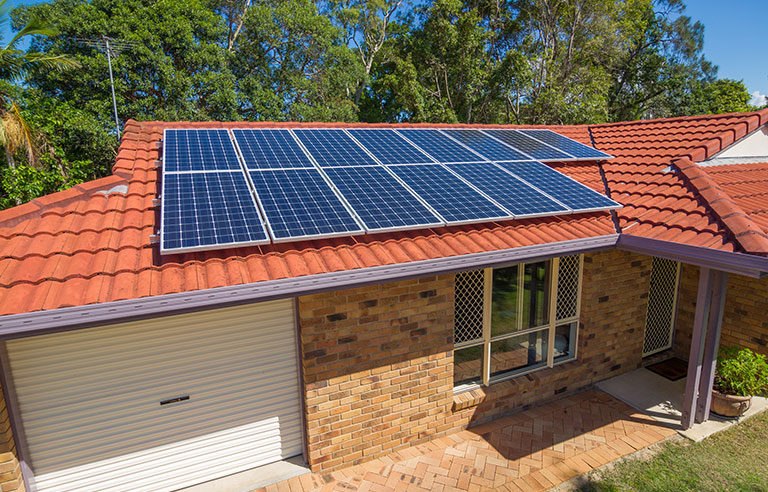Prevention through Design methods can make solar panel installation safer: CPWR report

Silver Spring, MD — As the use of solar energy panels continues to increase, Prevention through Design methods may help keep contractors safe during installation of the panels on small residential buildings, according to a recent report from the Center for Construction Research and Training, also known as CPWR.
In the report, CPWR defines PtD as “the practice of anticipating and ‘designing out’ potential occupational safety and health hazards and risks associated with new processes, structures, equipment, or tools, and organizing work, such that it takes into consideration the construction, maintenance, decommissioning and disposal/recycling of waste material, and recognizing the business and social benefits of doing so.”
According to the Bureau of Labor Statistics, safety is a concern during solar panel installation because installation mainly occurs on rooftops and the panels are heavy and fragile.
Researchers from the University of Washington and Oregon State University reviewed previous studies, interviewed 16 solar industry professionals, gathered observations from four case studies and collected feedback from seven contractors to create a solar PtD protocol.
The researchers identified seven PtD attributes for the design and installation of solar systems for small residential buildings: roofing material, roof slope, roof accessories, panel layout, fall protection system, lifting methods and electrical system. The researchers then used the data to create a solar PtD protocol.
The finalized protocol is for project managers, designers, safety personnel and contractors. Safety conditions of solar panels and their installation are addressed in design documents such as drawings and specs, while safety enforcement takes place during installation.
The protocol’s basic steps are:
- Define the expected solar energy system.
- Review the design of the existing roof, evaluating how it affects the solar panel layout and safety in solar installations (roof structures, roofing materials, roof accessories, roof layout).
- Review the solar energy system (panel layouts, roof access points, installation methods), including safety issues.
- Prepare initial design documents.
- Review and incorporate safety into the design and the design documents.
- Finalize the design documents.
- Have safety personnel back-check the design documents.
- Develop a safety implementation plan and enforce safety rules.
The researchers noted that further study is needed to address the resistance they encountered from smaller solar contractors on safety issues such as lifting equipment that can take a long time to set up and personal fall protection systems that feel too heavy or pose tripping hazards.
Post a comment to this article
Safety+Health welcomes comments that promote respectful dialogue. Please stay on topic. Comments that contain personal attacks, profanity or abusive language – or those aggressively promoting products or services – will be removed. We reserve the right to determine which comments violate our comment policy. (Anonymous comments are welcome; merely skip the “name” field in the comment box. An email address is required but will not be included with your comment.)

